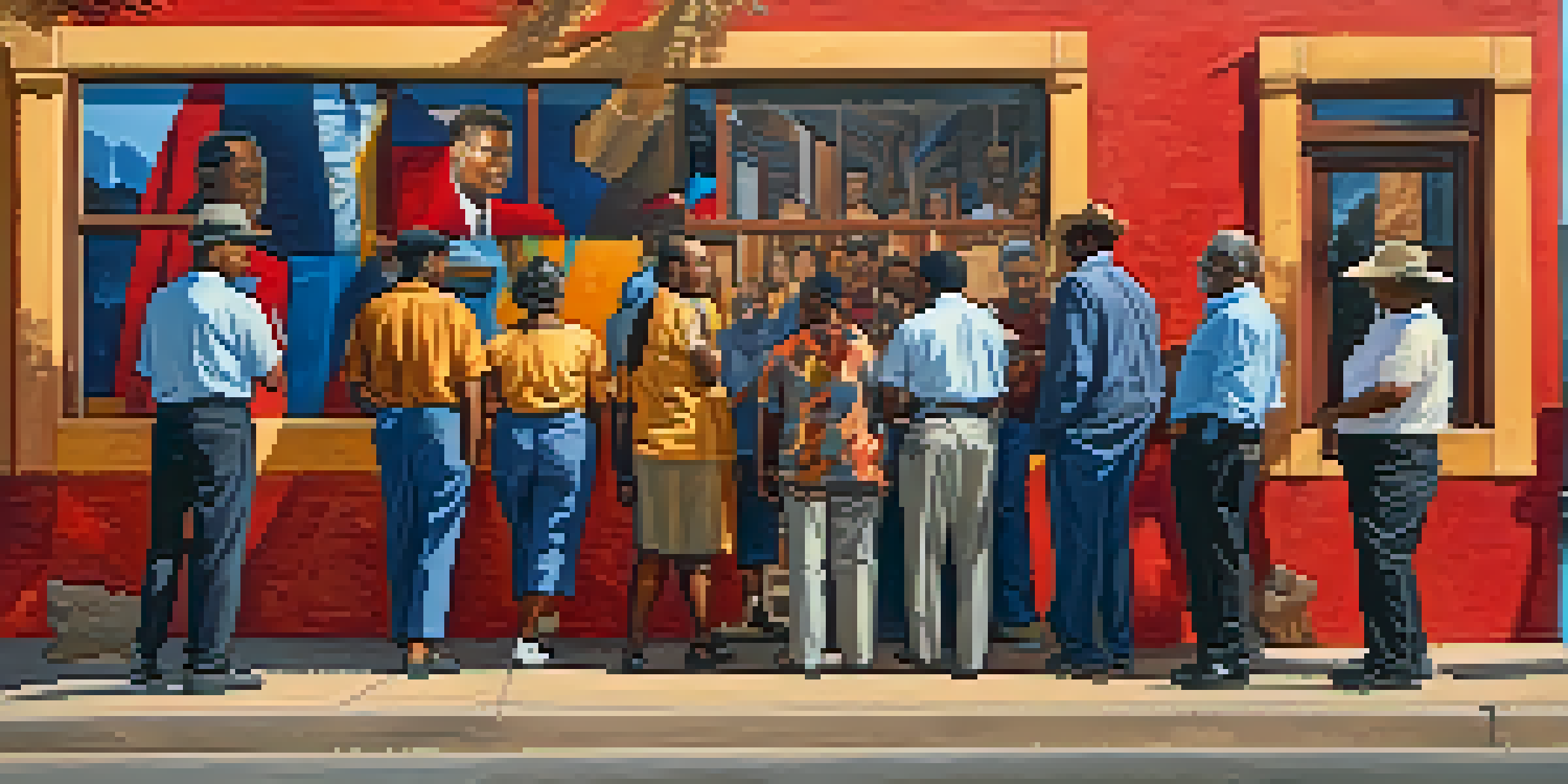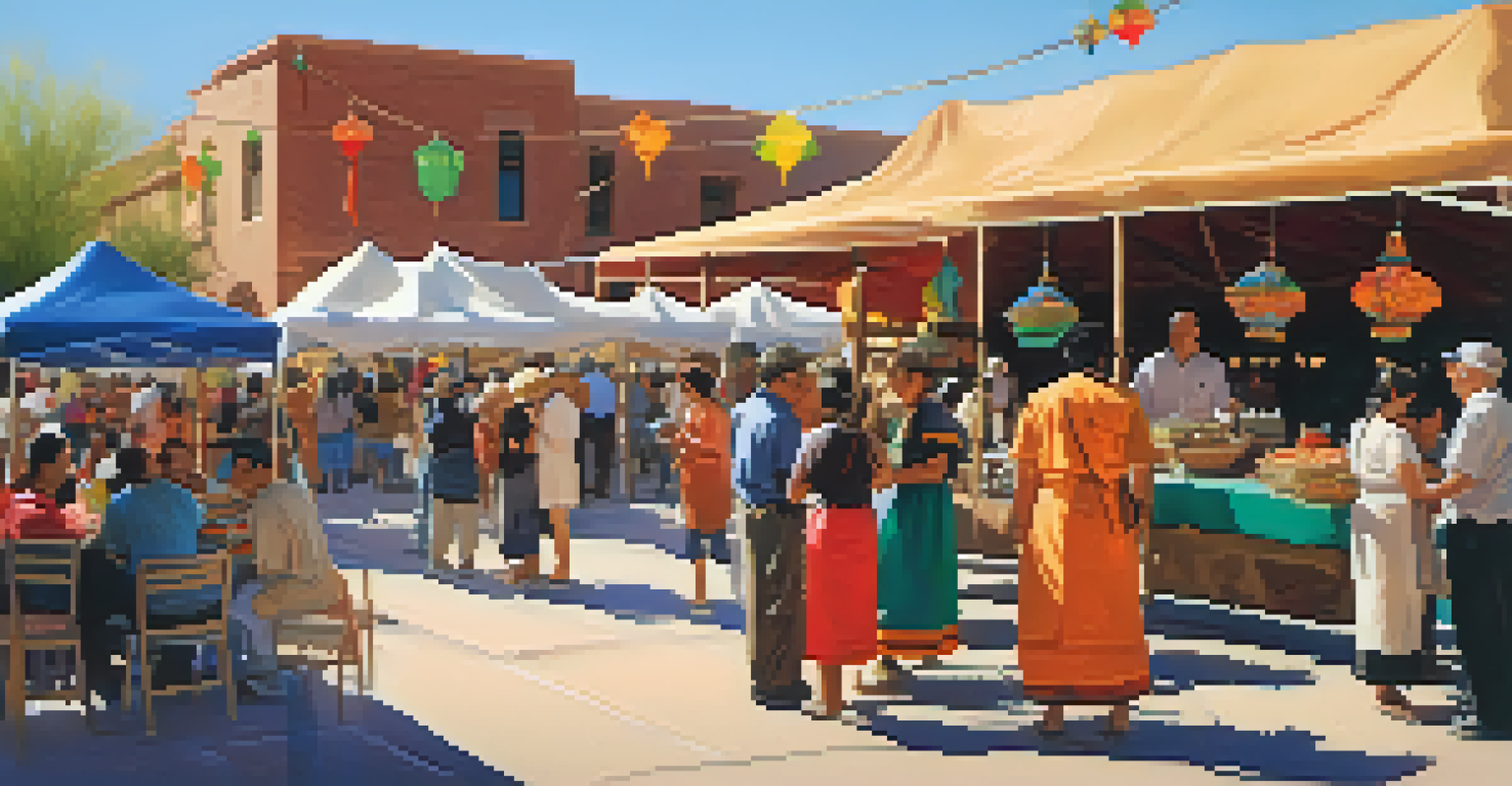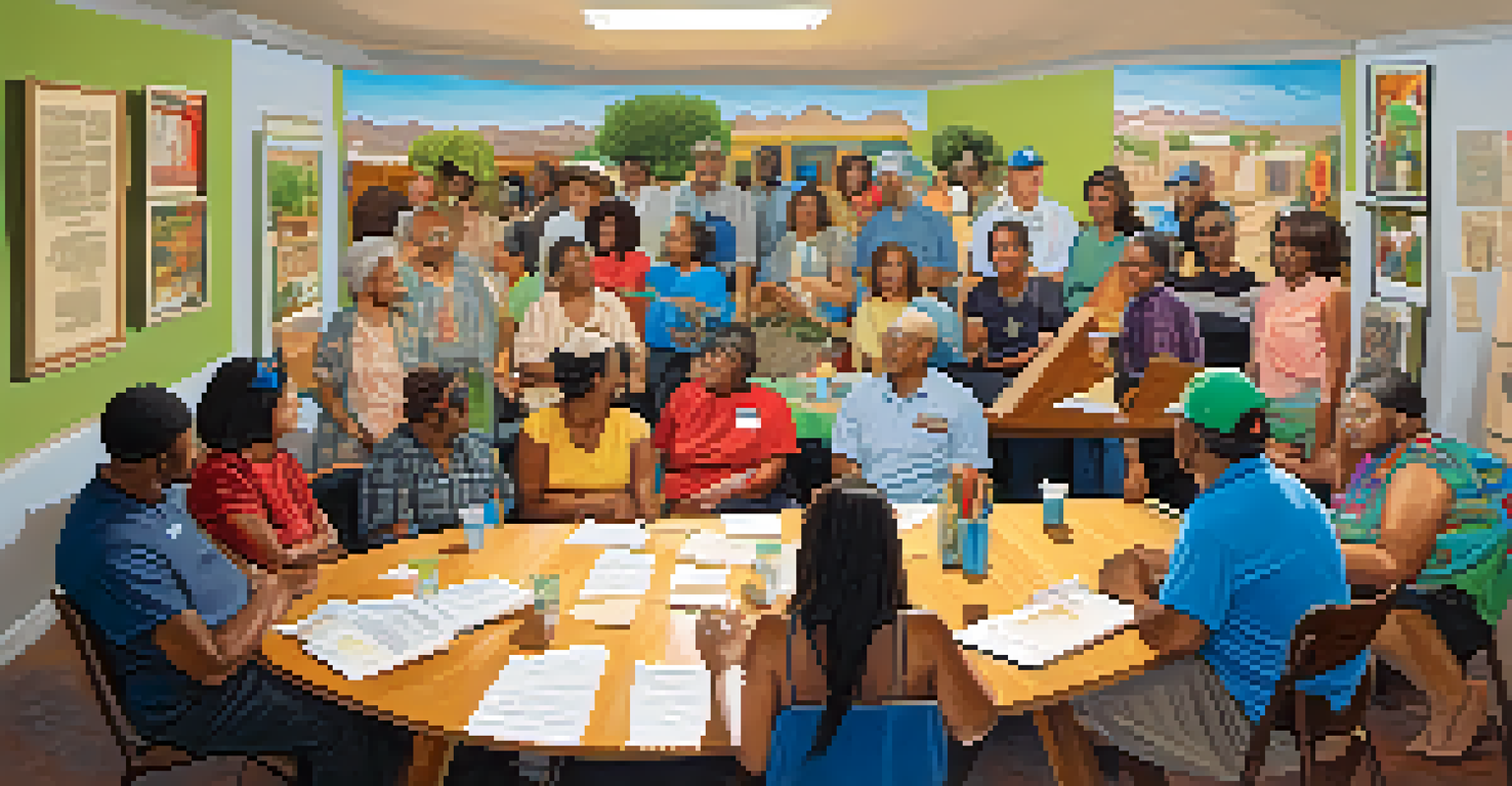Impact of Tucson's Neighborhoods on Civil Rights Activism

Historical Context of Civil Rights in Tucson's Neighborhoods
Tucson, Arizona, has a rich tapestry of neighborhoods, each contributing uniquely to civil rights activism. Historically, the city has been a melting pot of cultures, which has shaped its approach to social justice issues. Understanding the historical context of these neighborhoods helps us appreciate the local struggles for equality and justice. For instance, areas with significant Mexican-American populations have often been at the forefront of advocating for civil rights.
Injustice anywhere is a threat to justice everywhere.
In the 1960s, Tucson's neighborhoods became hotbeds for activism as various groups rallied against segregation and discrimination. These efforts were not just limited to protests; they also included educational campaigns and community organizing. The activism in neighborhoods like South Tucson highlights the grassroots level of the civil rights movement, where local voices were amplified.
Today, the legacy of these neighborhoods continues to influence current civil rights discussions. The historical significance of community activism in Tucson serves as a reminder of how local actions can lead to broader societal changes. Understanding this context is crucial as we delve deeper into the role of Tucson's neighborhoods in shaping civil rights.
Key Neighborhoods That Shaped Civil Rights Movements
Certain neighborhoods in Tucson have been pivotal in shaping the narrative of civil rights. For example, the historic Barrio Viejo has been a center of cultural identity and activism. Its residents have long fought against urban development that threatens their heritage, showcasing how neighborhood identity fuels civil rights efforts. This struggle is emblematic of larger battles fought across the nation, where communities resist erasure.

Similarly, the Westside neighborhood has a storied history of activism, particularly during the Chicano Movement of the 1970s. Residents organized protests and community events to draw attention to social injustices faced by Mexican-Americans. These grassroots efforts not only brought local issues to light but also paved the way for national discussions on civil rights.
Neighborhoods Drive Civil Rights
Tucson's diverse neighborhoods have historically played a vital role in civil rights activism, shaping local and national discussions on equality.
In contrast, the affluent neighborhoods of Tucson have often been less involved in activism, highlighting a disparity in engagement. This contrast illustrates how socioeconomic factors can influence participation in civil rights movements. By examining these neighborhoods, we can better understand the complexities of activism and the diverse motivations behind them.
Influence of Cultural Identity on Activism Styles
Cultural identity plays a significant role in shaping the methods and messages of civil rights activism in Tucson. Many neighborhoods celebrate their unique heritage, infusing their activism with cultural elements. This is particularly evident in events like the annual Tucson Meet Yourself festival, which showcases the city’s diverse cultures and their contributions to social justice.
The time is always right to do what is right.
Art and music also serve as powerful tools for expression. In neighborhoods where the arts thrive, such as the downtown area, activists use murals and performances to convey their messages. These creative outlets not only raise awareness but also foster community solidarity. For instance, murals depicting civil rights leaders can inspire and educate passersby about the ongoing struggles for equality.
Furthermore, the blending of cultural traditions with contemporary activism creates a vibrant tapestry of advocacy. This unique approach helps to engage a wider audience, making civil rights issues more relatable and accessible. Ultimately, the cultural identity of Tucson's neighborhoods enriches the civil rights landscape, making activism a community-centered endeavor.
Community Organizations and Their Impact
Community organizations in Tucson have been instrumental in driving civil rights efforts. Groups like the Southern Arizona Center for Economic Independence have mobilized residents to advocate for equitable policies. These organizations often serve as a bridge between local needs and governmental action, ensuring that marginalized voices are heard.
Additionally, grassroots organizations have focused on specific issues, such as immigration rights and housing justice. Their efforts often reflect the unique demographics of their neighborhoods, addressing the needs of the community directly. By organizing events, providing resources, and facilitating discussions, these groups strengthen the fabric of civil rights activism in Tucson.
Cultural Identity Fuels Activism
The unique cultural identities within Tucson's neighborhoods enhance civil rights activism, making it more relatable and community-focused.
The collaboration between various organizations has also led to more significant impact. When neighborhoods unite around common causes, their collective voice becomes more powerful. This solidarity is essential for creating lasting change and ensuring that civil rights issues remain at the forefront of community agendas.
Challenges Faced by Activists in Tucson
While Tucson's neighborhoods have been pivotal in civil rights activism, activists face numerous challenges. One significant hurdle is the lack of funding for community initiatives, which can stifle grassroots efforts. Many organizations rely on donations and volunteer work, making it difficult to sustain long-term projects that require substantial resources.
Moreover, political opposition can hinder progress. Activists often encounter resistance from local government or law enforcement, especially when advocating for policies that threaten established interests. This resistance can lead to tensions within the community, making it essential for activists to navigate these challenges carefully.
Despite these obstacles, Tucson's activists remain resilient. They adapt their strategies, often finding innovative ways to engage the community and raise awareness. By fostering collaboration and building alliances, they continue to push for justice and equality, proving that challenges can be met with determination and creativity.
Success Stories of Civil Rights Activism
Tucson boasts many success stories that highlight the effectiveness of local civil rights activism. One notable example is the successful campaign for bilingual education in public schools, which stemmed from community demands in neighborhoods with large Spanish-speaking populations. This achievement not only addressed educational inequalities but also empowered families to advocate for their children's rights.
Another success is the establishment of the Tucson Pima Arts Council, which promotes cultural awareness and inclusivity through the arts. This initiative has fostered community engagement, allowing residents to express their identities while advocating for social justice. Such projects illustrate how activism can lead to positive change in the community.
Community Organizations Make Impact
Local organizations in Tucson are crucial for mobilizing residents and addressing specific civil rights issues, fostering collaboration for lasting change.
These success stories serve as inspiration for future activists. They demonstrate that with dedication and collaboration, even the most daunting challenges can be overcome. By celebrating these victories, Tucson's neighborhoods reinforce the importance of activism and encourage new generations to continue the fight for civil rights.
The Future of Civil Rights Activism in Tucson
Looking ahead, the future of civil rights activism in Tucson appears promising yet complex. The city’s diverse neighborhoods continue to evolve, bringing new voices and perspectives to the forefront. This demographic shift can invigorate the civil rights movement, potentially leading to innovative strategies and alliances that address contemporary issues.
Technology also plays a crucial role in shaping the future of activism. Social media platforms provide activists with powerful tools to organize, raise awareness, and mobilize support. Neighborhood groups can now reach wider audiences, making it easier to share their messages and engage with allies both locally and nationally.

However, as activism evolves, it will be essential for Tucson’s neighborhoods to maintain their unique identities and community roots. Balancing local traditions with modern methods of advocacy will be key to sustaining effective civil rights efforts. As these neighborhoods continue to foster activism, they will undoubtedly shape the future landscape of civil rights in Tucson.